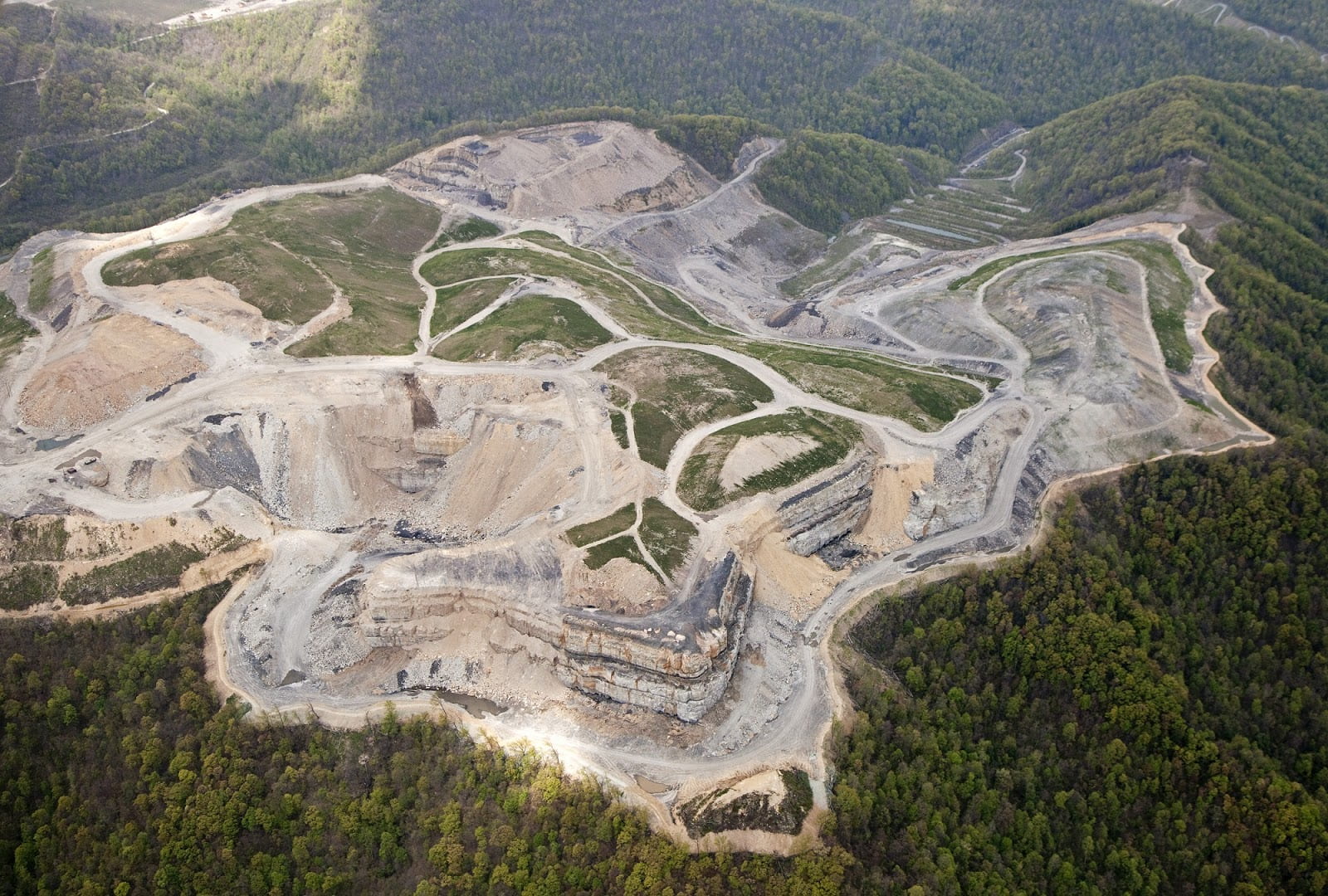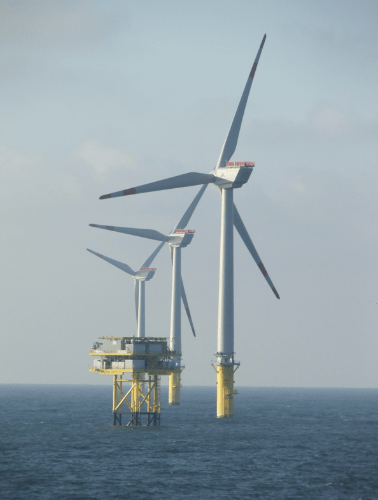Renewable Energy and You
In 2018, the California State Senate passed SB 100, a bill mandating California transition to 100% carbon-free energy sources by 2045, with smaller goals of 50% by 2025 and 60% by 2030. (De León, 2018). This is an incredibly ambitious bill within the United States, and one of the first of its kind. In 2018, California received 31% of its energy from renewable sources, illustrating we are already on the way to meeting our benchmark goals (Total System Electric Generation, 2018). California is often a leader in environmental policy which goes on to be adopted by other states, so the passage of this bill has far reaching implications for the rest of the Nation. This all begs the question: what is renewable and carbon-free energy, why is it important, and how does this all affect me?
It is important here to make a distinction between the three main types of energy used for electricity generation: fossil fuel sources, carbon-free sources, and renewable sources. Fossil fuel sources consist of coal, oil, and natural gas. These energy sources are inherently dirty and detrimental to the planet and those that inhabit it, which is why we wish to transition away from their use. The extraction of coal, oil, and natural gas has disastrous implications for the environment where these operations take place, destroying habitats and poisoning the air, water, and soil of the surrounding area. These operations can often be so massive that they permanently scar the landscape, like removing the tops of mountains to extract coal.
All of these are sources of energy that emit carbon dioxide when burned or other greenhouse gases in the extraction process, such as methane leakage from natural gas pipelines. Thus, the use of these energy sources contributes to and is the main driver of manmade climate change. These sources, especially coal, often emit harmful particulates and heavy metals into the atmosphere as well, which negatively affect the health of nearby communities. Investments in renewable energy help us steer away from relying on these finite and polluting resources for our electricity demands. Although carbon-free and renewable are two different terms with different meanings, this article will focus mainly on renewable energy. The distinction to be made here is that an energy source can be carbon-free without being renewable, but all renewable energy sources are carbon-free. For example, nuclear energy is carbon-free as it does not emit carbon dioxide to create electricity, but it is not renewable because uranium for nuclear fuel rods must be mined and there is a finite amount of it. Wind power is renewable since there is no end to the amount of wind we receive, and it is also carbon free because it does not generate any carbon dioxide emissions in the creation of power from a wind turbine. Hydropower is another energy source which is considered “carbon-free.” Although hydropower is technically renewable, many policies and institutions do not include large hydropower generators in the category of renewable as building a large hydroelectric dam can have disastrous consequences on the habitat where it is built, flooding land and decimating local wildlife populations (Cournoyer, 2013). Renewable energy includes sources like wind, solar, biomass, and geothermal power. These sources of energy are inexhaustible and thus are vital to transition to as our reserves of fossil fuel sources dwindle and become harder and more expensive to obtain. Although renewable energy sources technically do generate carbon emissions during the construction of parts like solar photovoltaic panels and wind turbines, the net reduction in carbon emissions when generating energy using these sources is far better than fossil fuel alternatives.
At this point, you might be thinking: “Wow, renewable energy sounds great, but transitioning our entire energy grid sounds really expensive.” This is a great point, so let me help ease your conscience. As we invest more in renewable energy sources and develop new technology to make these sources more accessible and efficient, the cost decreases. Meanwhile, fossil fuel energy costs stagnate or continue to rise as our reserves of things like coal and oil dwindle. According to Forbes, the International Renewable Energy Agency reports that, renewable energy is cheaper than ever, with “onshore wind and solar PV power [being], frequently, less expensive than any fossil-fuel option, without financial assistance” (Dudley, 2019). Furthermore, they state that costs of renewables are dropping over 10% each year. This means renewable energy is directly competitive with fossil fuel sources. As more and more cities, states, and countries around the world invest in renewable energy sources, that cost will continue to fall. Renewable energy is impossible to ignore. This is why it is unrealistic to continue to invest in fossil fuel technologies when the cleaner, safer, cheaper, and future proof option of renewables exists.
Renewables are not only quickly becoming cheaper than fossil fuel alternatives, they also create more and higher paying jobs for those that work in the industry, making them better for the community and the economy overall. In 2017, the Department of Energy’s Employment Report showed that there were over five times as many workers employed in the renewable energy sector as in the fossil fuel sector. Furthermore, the renewable energy sector continues to grow while the fossil fuel sector, especially coal, reports declines in employment. Many of these renewable energy jobs are local, such as installing solar panels on a home, and have “average wages above the national median” (Ettenson, 2017). Clearly, with all these advantages over fossil fuels, we should be heavily pushing for the development of renewables now instead of when our limited fossil fuel reserves run out and it is too late. California has the right idea.
Of course, renewables are not perfect, and there are some important concerns to address here. The first major issue with renewables is the siting of things like large solar fields or wind farms. Although not nearly as environmentally destructive as a coal fired power plant, these sources do take up large amounts of open space, and for maximum efficiency can only be built in certain areas of the country. Thus, siting these facilities can often be difficult or be met with pushback from residents who do not wish to live near them. Another issue with renewables lies in reliability. Although analyses can be done to ensure these facilities are constructed in the most optimal locations, the sun does not always shine and the wind does not always blow. This is especially important at night, when most people use their electricity. Thus, renewables have a bit of a reliability problem. These issues can be abated, however. Renewable sources can be supported by a different source of energy at peak hours, like natural gas, while we transition to a 100% renewable grid. Another solution to this problem is storing the energy generated during peak hours with batteries. Currently, technology on batteries is being developed and researched, but this is currently a barrier we face towards transitioning to 100% renewable energy generation.
So, what does this all mean for you? If you rent an apartment in San Francisco or are planning to next year, you will be supporting the process of utility companies switching to renewable energy sources and also curbing your carbon footprint with the CleanPowerSF program, which every San Franciscan is automatically enrolled in. This program is run by the San Francisco Public Utilities Commission in partnership with Pacific Gas and Electric (PG&E) to offer renewable energy at comparative rates to the residents of San Francisco (CleanPowerSF). The program contains two tiers. The first tier is Green, which is the default tier for customers in San Francisco. In this tier, at least 50% of customers’ electricity comes from renewables. The second tier is SuperGreen, which supplies 100% of one’s electricity from renewables. According to CleanPowerSF’s website, it would only cost the average family $3 more per month to upgrade from Green to Supergreen, a cheap and extremely important investment. If you do not live in San Francisco, PGE’s webpage on Community Aggregation Programs, located here, or CalCCA’s website here, both contain information for similar programs to CleanPowerSF across the Bay Area.
While renewable energy is still a developing technology, it is already cheaper and much better for the environment than fossil fuels. We must take steps as an entire country to transition our energy grid to use these sources of energy. California’s policy is a great starting point and a model for the United States as a whole. As this article has hopefully illustrated, the benefits of adopting a renewable energy system far outweighs the costs of developing one. Our fossil fuel system is extremely outdated and needs to be modernized for the new era in order to overcome the climate crisis we currently face.
Works Cited
CleanPowerSF. (n.d.). Retrieved from https://www.cleanpowersf.org/
Cournoyer, C. (2013, September). Is Hydropower a Renewable Energy or Not? Retrieved from
https://www.governing.com/topics/transportation-infrastructure/gov-hydropower-renewable-energy.html
De León, K. (2018, September 10). SB-100 California Renewables Portfolio Standard Program:
emissions of greenhouse gases. Retrieved from https://leginfo.legislature.ca.gov/faces/billNavClient.xhtml?bill_id=201720180SB100
Dudley, D. (2019, May 30). Renewable Energy Costs Take Another Tumble, Making Fossil
Fuels Look More Expensive Than Ever. Retrieved from https://www.forbes.com/sites/dominicdudley/2019/05/29/renewable-energy-costs-tumble/#175465ce8cea
Ettenson, L. (2017, February 8). U.S. Clean Energy Jobs Surpass Fossil Fuel Employment.
Retrieved from https://www.nrdc.org/experts/lara-ettenson/us-clean-energy-jobs-surpass-fossil-fuel-employment
Total System Electric Generation. (n.d.). Retrieved from
https://ww2.energy.ca.gov/almanac/electricity_data/total_system_power.html



